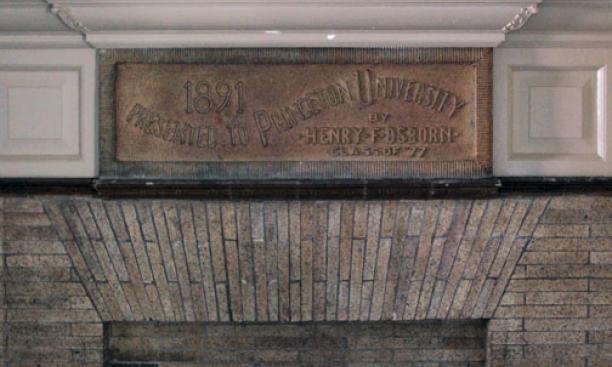A rare temple to 120 years of American attitudes about athletics and race stands empty today near Princeton University – staring into the abyss of demolition.
Over the years the little Romanesque building at 86 Olden Street has been known as Osborn Clubhouse, the Third World Center, and the Carl A. Fields Center for Equality and Cultural Understanding. The oldest building on Prospect Avenue, it has welcomed Theodore Roosevelt, Woodrow Wilson and Michelle Obama.
But it’s located on a site that’s ripe for expanding the school’s engineering quad, and although Princeton hasn’t torn down a 19th century building since 1965, that may change soon. A university spokesperson told The Daily Princetonian on March 10 that the school is in a phase where “we are considering options with and without 86 Olden.”
The building was originally funded by Henry Fairfield Osborn, heir to a railroad fortune and member of the Princeton Class of 1877. According to a 2007 article in “The Prince,” Osborn was a eugenicist who believed in the superiority of the Caucasian race. A comparative anatomy professor at Princeton, he was also, along with Roosevelt, a believer in the strenuous life. He later served as director of the American Museum of Natural History in New York.
The building was designed by former Princeton student Thomas Speir and built in 1892 as a home for the school’s football team. Charles McKim of McKim, Mead and White added a wall and gate linking it to neighboring University Field.
The little clubhouse would usher in a golden age for Princeton intercollegiate athletics that would last nearly eight decades. “Orange Boven” or “Orange Above All” – the battle cry of the Prince of Orange and Nassau – was the motto above an arched fireplace in its trophy room.
“Football was the key to Princeton becoming a very famous school,” said architectural historian W. Barksdale Maynard, a 1988 graduate of the school who’s currently working on a book about the history of the campus. “It could have sunk into a very languid backwater, but the sport played a critical role in how Princeton developed.”
After a 1944 fire destroyed all of the school’s football trophies and memorabilia in the school’s gym, Osborn Clubhouse was all that remained from an era of unstoppable Princeton gridiron power. “The Clubhouse is the only Princeton structure that survives from this famous era,” said Maynard.
It is also heir to Princeton’s role in the civil rights movement. In 1971, the school gave the building to minority students as the Third World Center, and by the 1980s it was much frequented by the future Michelle Obama.
“It played an important role in the historic desegregation of the Ivy League starting in the 1960s,” said Maynard. “Future generations are going to want to see the place where Michelle Obama remembers having spent much of her time on campus. It was formative in her development. The story of the Civil Rights Movement grows more interesting with time, and in fifty years, I believe this building will be regarded as fundamental to that historic epoch.”
He is not the only alumnus protesting the building’s demise. In a letter to University Architect Ronald McCoy, architect Robert Venturi (Class of ’47) and his wife Denise Scott Brown expressed their “fervent concern regarding the possible demolition of the Osborn Clubhouse.”
The university’s board of trustees will meet on March 26 to determine its fate.
For more, go here.



